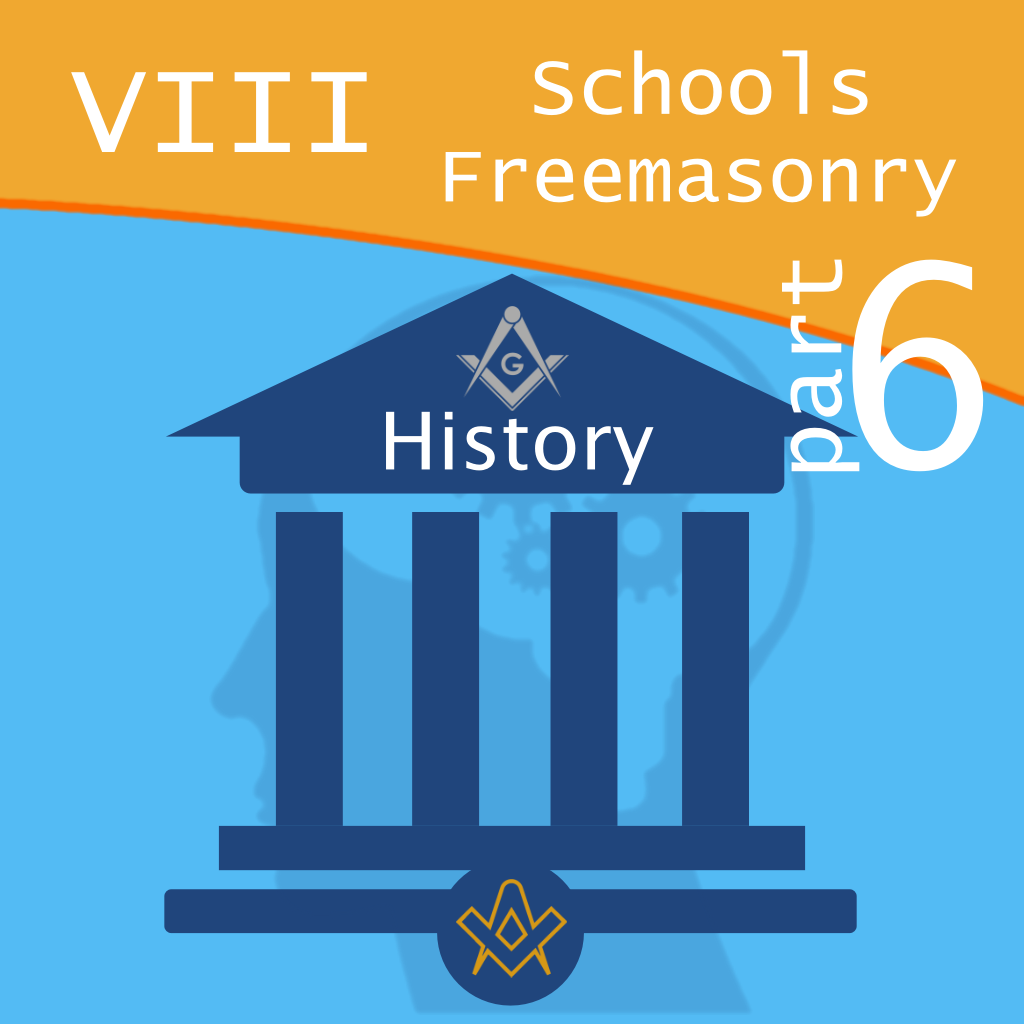“The origin and source whence first sprang the institution of Freemasonry, such as we now have it, has given rise to more difference of opinion and discussions among Masonic scholars than any other topic in the literature of the institution…
Doubtless the well-settled and carefully nourished prejudices of some will be shocked by any attempt to expose the fallacies and falsehoods which have too long tarnished the annals of Freemasonry.
But such an attempt cannot, if it be successfully pursued, but command the approval of all who believe with Cicero that history is “the witness of time, the light of truth, and the life of memory.”
– Albert G. Mackey
Masonic scholar Albert G. Mackey wrote much regarding Masonic fact and fiction within “The History of Freemasonry: it’s Legends and Traditions” (1898).
He, like a growing number of other Masonic authors of the era, believed that although the ‘legends of the Craft’ held an important position within the history of Freemasonry, they were just that – legends and myth.
A dedication to fact-based historical writings as opposed to the ‘traditional’ or ‘romantic’ history, led to the formation of what would become known as the ‘Authentic School’ of Freemasonry.
In the study of Freemasonry there are two kinds of statements which are presented to the mind of the inquiring scholar, which are sometimes concurrent, but much oftener conflicting, in their character.
These are the historical and the traditional, each of which appertains to Freemasonry as we may consider it in a different aspect.
The historical statement relates to the Institution as we look at it from an exoteric or public point of view; the traditional refers only to its esoteric or secret character.
So long as its traditional legends are confined to the ritual of the Order, they are not appropriate subjects of historical inquiry.
They have been invented by the makers of the rituals for symbolic purposes connected with the forms of initiation.
Out of these myths of Speculative Masonry its philosophy has been developed; and, as they are really to be considered as merely the expansion of a philosophic or speculative idea, they can not properly be posited in the category of historical narratives.
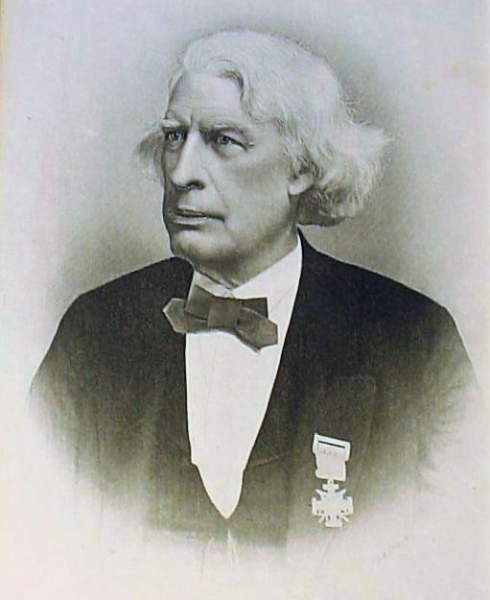
Albert Gallatin Mackey
IMAGE LINKED: wikimedia Attribution 4.0 International (CC BY 4.0)
Mackey separates the schools of Masonic history into two categories:
The Historic – embraces the period within which we have authentic documents in reference to the existence of the Order.
The Prehistoric – embraces the period within which we have no authentic memorials, and when we have to depend wholly on legends and traditions.
From “The History of Freemasonry: it’s Legends and Traditions”
(Chapter II – The Legendary History of Freemasonry):
In the history of every ancient nation there is a prehistoric and a historic period.
The prehistoric period is that which has no records to prove the truth of the events that have been attributed to it.It is made up of myths and legends, founded — some of them, in all probability — on a distortion of historical facts, and some of them indebted entirely to imagination for their invention.
The historic period is that which begins with the narration of events which are supported by documents, either contemporary with the events or so recently posterior to them as to have nearly all the validity of contemporary evidence.
Just such a division of periods as this we find in the history of Freemasonry.
The prehistoric period, more commonly styled the legendary history, embraces the supposed history of the rise and progress of the Institution in remote times, and details events said to have occurred, but which have no proof of their occurrence other than that of oral tradition, unsupported by that sort of documentary evidence which is essentially necessary to give a reliable character to an historical statement.
The historic period of Freemasonry commences with the time when written or printed records furnish the necessary testimony that the events narrated did actually occur.
In treating of the history of nations, scholars have found great difficulty in precisely defining the point of separation between the prehistoric and the historic periods.
As in natural history, it is almost impossible to define the exact line of demarcation between any two consecutive classes of the kingdoms of native so as to distinguish the highest species of a vegetable from the lowest of an animal organization, so in political history it is difficult to tell when the prehistoric period ends and the historic begins.
In Freemasonry we meet with the same embarrassment, and this embarrassment is increased according to the different standpoints from which we view the institution.
If we adopt the theory (as has been done by a few writers too iconoclastic in their views) that Speculative Masonry never was anything but that which its present organization presents, with Grand Lodges, Grand Masters, and a ritual of distinct degrees, then we are compelled to place the commencement of the historic era at that period which has been called the Revival in the second decade of the 18th century.
If, with more liberal views, we entertain the opinion that Speculative Masonry was founded on, and is the offspring of, the Operative system of the Stonemasons, then we must extend our researches to at least the Middle Ages, where we shall find abundant documentary evidence of the existence and character of the Operative parent to which the Freemasonry of the present day, by a well-marked transition, has succeeded.
Connecting the written history of the Operative Masons with that of its speculative offshoot, we have an authentic and continuous history that will carry us back to a period many centuries anterior to the time of the so-called Revival in the year 1717.
If I were writing a history of Speculative Masonry merely, I should find myself restricted to an era, somewhere in the 17th century, when there is documentary evidence to show that the transition period began, and when the speculative obtruded into the Operative system.
But as I am really writing a history of Freemasonry, of which the Operative and the Speculative systems are divisions, intimately connected, I am constrained to go farther, and to investigate the rise and the progress of the Operative art as the precursor and the founder of the Speculative science.
The authentic details of the condition of Operative Masonry in the Middle Ages, of its connection, if it had any, with other organizations, and its transmutation at a later period into Speculative Masonry, will constitute the historic narrative of Freemasonry.
Its prehistoric narrative will be found in the myths and legends which were, unfortunately, for a long time accepted by the great body of the Craft as a true history, but which, though still credited by many, are yet placed by most modern Masonic scholars in their proper category.
These legends, some of which are preserved in the rituals, and some are becoming almost obsolete, have a common foundation in that traditional narrative which is known as the Legend of the Craft [1] and which must first be understood before we can with satisfaction attempt to study the legendary history of the Institution.
But this legend is of such length and of so much importance that it demands for its consideration a separate and distinct chapter.
I, by no means, intend to advance the proposition that all the myths and legends now taught in the Lodges, or preserved in the works of Masonic writers, are to be found in the Legend of the Craft, but only the most important — those that are still recognized by the more credulous portion of the Fraternity as genuine and authentic narratives — receive their first notice in the Legend of the Craft , although they are indebted for their present, fuller form, to a development or enlargement, subsequently made in the course of the construction of the modern ritual.
[1] The Rev. Bro. Woodford calls it the “Legend of the Guild.” But I prefer the title here used,
The concept of an ‘authentic school’ of Masonic education and study was formally introduced by Quatuor Coronati Lodge No. 2076, the world’s premier Masonic research lodge, which was established in 1884, and consecrated in 1886.
Founding members included; Robert Freke Gould, Charles Warren, William Harry Rylands, The Revd Adolphus Frederick Alexander Woodford, Walter Besant, John Paul Rylands, Major Sisson Cooper Pratt, William James Hughan and George William Speth.
Dissatisfied with the way the history of Freemasonry had been expounded in the past they founded a lodge dedicated to an evidence-based approach to Masonic history.
This scholarly approach “replaced the more imaginative writings of earlier authors; it became known as the ‘authentic school’ of Masonic research“.
Proponents of the authentic school demand a rational, empirical attitude towards the history of the Craft, to create an accurate and unbiased picture.
The Lodge flourished, and it was George William Speth’s idea to form a Correspondence Circle, whereby members around the world could contribute papers for presentation, and inclusion in the published transactions, Ars Quatuor Coronaturum.
The lodge, its Correspondence Circle and publication of AQC continue to this day and is a major resource for all those interested in a myriad of Masonic subjects, all written to academic, and crucially, authentic standards.
Founder members of Quatuor Coronati and the ‘Authentic School’
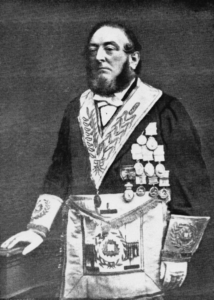
Probably the foremost drive for the establishment of Quatuor Coronati Lodge was Revd. Adolphus Frederick Alexander Woodford (1821-1887).
Adolphus was initiated into his father’s lodge, the Lodge of Friendship No 345 in Gibralter (now the Royal Lodge of Friendship No 278) during his career as a soldier.
On his return to England he studied Theology, gaining a BA in 1846, and was ordained as a priest in 1847.
After rising through the ranks as a dedicated Freemason, he dedicated himself to writing and became editor of the Freemason and the Masonic Magazine, frequently contributing most of the copy himself.
He compiled Kenning’s Masonic Cyclopaedia for the publisher of the two magazines.
Woodford used the Freemason in 1879 to oppose a move in Grand Lodge to enforce uniformity of ritual on its lodges. His own letter on the subject provoked much correspondence, convincing Grand Lodge of the groundswell of resistance to such a move.
The last few years of his life were also occupied in collaboration with other Masonic researchers, such as Hughan and Gould, which eventually brought into being England’s first research lodge, Quatuor Coronati.
As acting Immediate Past Master, he guided the lodge through its first two years of existence, taking the chair in the frequent absences of the Master, Charles Warren, then Metropolitan Commissioner of Police. Gould wrote a stellar obituary for Woodford in AQC (1888), in which it was clear that the rest of the lodge looked on him as a mentor.
Woodford’s legacy is such that he is seen as a pioneer of the Authentic school of masonic research, applying proper historical methodology in place of carelessly repeated fable.
He earnestly collected and studied early masonic manuscripts, writing the introduction for Hughan’s published collection.
He contributed greatly to an understanding of the enigmatic history of the York lodges in the eighteenth century.
His lasting legacy may be seen in the continued activity and influence of Quatuor Coronati Lodge, and the rational approach to masonic history.
Lastly, he played at least some part in the establishment of the Hermetic Order of the Golden Dawn, passing the cipher manuscripts from which it was founded to his friend William Wynn Westcott shortly before his death.
He had already made a strong case that the mystic and philosophical elements which allowed Freemasonry to evolve from a purely operative to a speculative society were likely to have been imported from some aspects of the Hermeticism practised during the Renaissance.
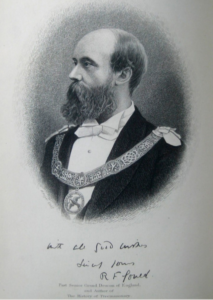
Robert Freke Gould (1836 – 1915).
A soldier, barrister and prominent Freemason and Masonic historian, Gould’s History of Freemasonry comprised of a weighty six volumes, was first published by Thomas C. Jack (London 1883–1887), the series remains a standard reference work on the subject.
Gould became a Freemason in 1855 when he was initiated into the Royal Navy Lodge, No. 429, and was Master of the Inhabitants Lodge at Gibraltar in 1863, also of the Meridian Lodge, No. 743, a Military Lodge attached to his regiment.
He devoted himself to Masonic and military literature from 1858 and on giving up his Law career in 1877 he devoted his life to writing and research.
Gould was made Master of the Moira Lodge in 1874 and was appointed Senior Grand Deacon of the United Grand Lodge of England in 1880.
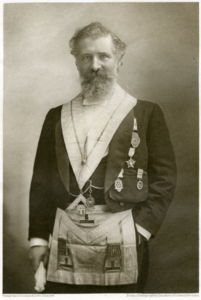
George William Speth (1847-1901)
A founding member of Quatuor Coronati Lodge No. 2076, and secretary for its first fourteen years, it was George William Speth’s idea to form a Correspondence Circle for the lodge.
An accomplished musician and knowledgeable in numerous European languages, he was author of several Masonic compilations and thirty-five papers for Ars Quatuor Coronatorum.
Published shortly before he died, his A Masonic Curriculum has been undeservedly long out of print.
Speth was Worshipful Master of Lodge of Unity No. 183, UGLE (1876).
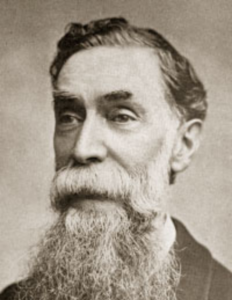
William James Hughan (1841-1911)
William was Senior Grand Deacon of the Grand Lodge of England. Hughan was the editor of the revised edition of Mackey’s Encyclopaedia, and author of numerous papers for Ars Quatuor Coronatorum, and the book Origin of the English Rite of Freemasonry.
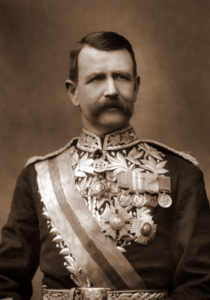
Charles Warren (1840-1927)
Warren was an officer in the British Royal Engineers, an archaeologist, and head of the London Metropolitan Police (1886-1888).
He travelled extensively in the Holy Land, writing a number of books on Biblical archaeology, particularly Jerusalem.
Warren was elected Founding Master of Quatuor Coronati Lodge No. 2076, in 1884.
The lodge warrant was granted on November 28, 1884 but, due to Warren’s departure to Buchuana, Africa, the lodge did not meet until after his return at the end of 1885.
He was installed at the first regular meeting on January 12, 1886, when the lodge was consecrated.
Warren attended three of the seven meetings called during his almost three year term of office, his last being March 1887 when he read a paper on the orientation of temples.
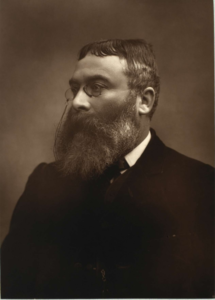
Sir Walter Besant (1836-1901)
Besant was a prolific author, historian, Secretary to the Palestine Exploration Fund, and also one of the founders and first chair of the Society of Authors in 1884.
His brother Frank was married to Annie Besant, a prominent feminist and member of the co-Masonic Order, Le Droit Humain.
He was initiated in Lodge of Harmony, No. 1143 (later, No. 841 and erased 1868), Port Louis, Mauritius, in 1862, and joined the Marquis of Dalhousie Lodge, No. 1159, London, in 1869, becoming WM in 1873.
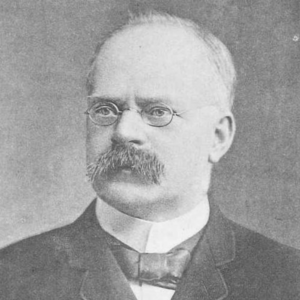
John Paul Rylands (1846-1923)
A barrister, genealogist, topographer and Fellow of the Society of Antiquaries.
He was Initiated in the Lodge of Faith and Unanimity, No. 417, Dorchester, in 1872; joined the Marquis of Lorne Lodge, No. 1354, Leigh, Lancashire, in 1879; and the Lodge of Lights, No. 148, Warrington, in 1880, where he served as JW the same year.
Was exalted in Chapter of Elias Ashmole, No. 148, in 1880.
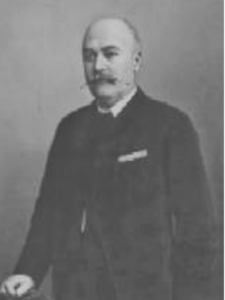
Sisson Cooper Pratt (1844-1919)
Pratt was a Major in the Royal Artillery, PSC; Gold Medallist, RA Institution.
Initiated in the Bayard Lodge, No. 1615, London, 1876, and subsequently joined the Kaisar-i-Hind and Moira Lodges.
Writer of numerous books on the military and warfare.
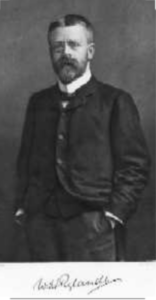
William Harry Rylands (1847-1922)
Relands was a Fellow of the Society of Antiquaries; Member of the Asiatic Societies of London and Paris; Secretary of the Society of Biblical Archaeology.
Initiated in 1872 in Faith and Unanimity Lodge, No. 417, Dorchester; joined Lodge of Antiquity, No. 2, London, in 1881, and exalted in Chapter of St. James, No. 2, London, in 1882.
Grand Steward, 1887. Author of Freemasonry in the xvii century in Warrington, Chester and many other works and contributions to the Masonic press, as well as papers on antiquarian matters.
Text & image reference source includes : Wikipedia, QC website, Freemasonry.bcy.ca, AQC vol. xiv, p. 98. via bcy.ca,
The Authentic School today
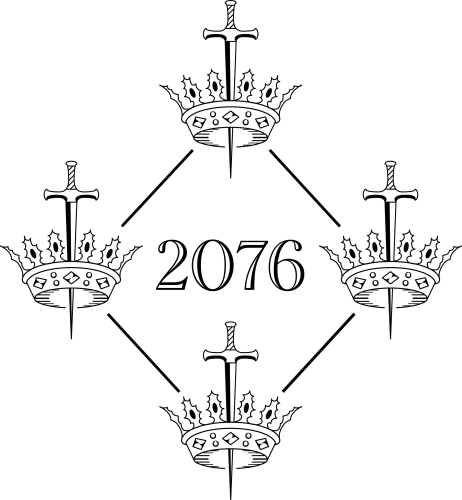
Quatuor Coronati Lodge No. 2076 is still the premier Masonic research lodge and meets at Freemasons’ Hall, Great Queen Street, London.
In addition to quarterly meetings where papers are delivered and the presenters questioned, the Lodge publishes yearly transactions titled Ars Quatuor Coronatorum and maintains the Quatuor Coronati Correspondence Circle (QCCC) to allow participation from Masons all over the world.
For more information see their website https://www.quatuorcoronati.com/
Quatuor Coronati’s annual Transactions are known as Ars Quatuor Coronaturum or ‘AQC’
Published annually since 1886, Ars Quatuor Coronaturum is the longest continuously running Masonic Research Journal in the world. Collectively, AQC’s volumes form a repository of Masonic history and research, and are regarded as one of the most important sources available.
A list of past articles can be found here.

Quatuor Coronati
An introduction to the Premier Lodge of Masonic Research
more….
Article by: Philippa Lee. Editor

Philippa Lee (writes as Philippa Faulks) is the author of eight books, an editor and researcher.
Philippa was initiated into the Honourable Fraternity of Ancient Freemasons (HFAF) in 2014.
Her specialism is ancient Egypt, Freemasonry, comparative religions and social history. She has several books in progress on the subject of ancient and modern Egypt. Selection of Books Online at Amazon

The History of Freemasonry: It’s Legendary Origins
By: Albert G. Mackey
An air of profound mystery surrounds the fraternal order of Free and Accepted Masons, or Freemasons. Built on three pillars of brotherly love, charity, and truth, the order ranks among the world’s oldest and most renowned societies.
This classic study explores Freemasonry’s history and traditions, both legendary and documented, and chronicles the society’s influence on the Western world, particularly in regard to American culture and government.
Author Albert Gallatin Mackey, a renowned historian of the society who held many high positions in the order, traces the rise of Freemasonry from its roots in the ages of Biblical patriarchs and ancient Rome to the eighteenth-century involvement of the Founding Fathers of the United States.
He also explores the associations of the Freemasons with the Knights Templars of the Crusades, the Druids, the Rosicrucians, and a secret Muslim sect known as the Assassins.
In addition, he discusses the significance of the Stone of Philosophers, Euclidean geometry, and a variety of forms of architecture. This complete survey of the mythical and allegorical narrative of Freemasonry offers novices and experts alike a revealing look at the society’s philosophical and ritual foundations.

History of Freemasonry in six volumes (various languages)
By: Robert Freke Gould
Written by an eminent Masonic historian, this authoritative survey is considered one of the most well-rounded accounts of Masonry in all its stages.
First published in a series of volumes from 1882 to 1887, it chronicles “the Craft’s” development and movement throughout Europe and to the Far East, Africa, and the Americas.
A monumental work culled from many years of research, it spans the vast range of Masonic history from ancient to modern times, including Medieval Operative Masonry, English Laws of the Middle Ages, the Story of the Guild, Legend of the Craft, Early Scottish Craft, the Great Division in English Masonry, Operatives and Guilds throughout the World, and the Grand Lodge of England.
Studied for over a century by members of the order and neophytes alike, The Concise History of Freemasonry was revised and updated at the turn of the twentieth century, and remains an important testament to Freemason history.
No serious inquirer can get a more powerful feel of the levels of Freemasonry, or be freshly inspired by the order, without first reading this epic work. This edition includes 16 illustrations from the original publication.

Origin of the English Rite of Freemasonry: Especially in Relation to the Royal Arch Degree
By: William James Hughan
Social history as a corrective to a historiography is often too limited to diplomacy and wars. It began an upward trajectory as early as the 1930s, but it remains constrained by the frustrating cost and availability of materials that even great research libraries lack.
This volume is a case in point. Fraternal movements like Freemasonry have impacted society for hundreds of years.
Yet, over time research into their undoubted influence has been handicapped by their codes of secrecy, arcane rituals, and the paucity of continuing tertiary research projects.
As a step towards “more light” Westphalia Press has produced a number of scarce titles that will be helpful in understanding the “secret empire” of lodges, initiations, and (candidly) the deliberately inscrutable.
Recent Articles: Eight Schools of Freemasonry
 8 Schools of Freemasonry - Romantic P8 We end this series with the 'Romantic School'. Not a flowery tribute but one that explores the various 'romantic' theories as to the origins of Freemasonry, such as the Biblical aspects, the stone masons guilds, the Knights Templar. |
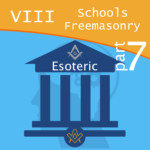 8 Schools of Freemasonry - Esoteric P7 The Esoteric School – Arthur Edward Waite viewed Freemasonry as a form of mystical teaching. He taught that enlightenment was achieved through the perfection of the self via the study of arcane knowledge and practice of occult rites. |
 8 Schools of Freemasonry - Historic P6 A dedication to fact-based historical writings as opposed to the 'traditional' or 'romantic' history, led a group of prominent Freemasons to form what would become known as the 'Authentic School' of Freemasonry. |
 8 Schools of Freemasonry - Philosophy P5 To finish with Roscoe Pound's invaluable work on the Philosophies of Freemasonry, we look at his final summing up: A Twentieth-Century Masonic Philosophy: The Relation of Masonry to Civilisation. |
 8 Schools of Freemasonry - Philosophy P4 The Philosophy of Masonry – Metaphysics and Symbolism. Following on from Part 3 of The Eight Schools of Freemasonry, we move on to Albert Pike, whose Masonic spiritual philosophy was concerned with Symbolism. |
 8 Schools of Freemasonry - Philosophy P3 The Philosophy of Masonry – Religion. Following on from Part 2 of The Eight Schools of Freemasonry, we explore the Religious School of the Rev. George Oliver. |
 8 Schools of Freemasonry - Philosophy P2 Following on from Part 1 of The Eight Schools of Freemasonry which discussed William Preston's School of Masonic Education, we explore the Philosophical School of Karl Christian Friedrich Krause. |
 8 Schools of Freemasonry - Philosophy P1 For what does Masonry exist? What is the end and purpose of the order? - Roscoe Pound's Lectures on the Philosophy of Freemasonry (1915), is probably one of the most concise and worthy explanation as to the subject. |
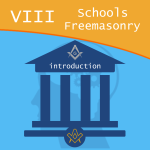 8 Schools of Freemasonry - Introduction Follow this series as examine the 'Eight Schools of Freemasonry' that have developed over the centuries since its founding in 1717. This month we outline the series and the Masonic Conception of Education. |
masonic knowledge
to be a better citizen of the world
share the square with two brothers

click image to open email app on mobile device

Quatuor Coronati Lodge shares research and encourages scholarship via the QC Correspondence Circle – QCCC – the world’s first and oldest Masonic research society established over 135 years ago.
Wherever you are based, from the Americas to Europe, Africa, Asia, and Australia & New Zealand, we would be delighted if you were to join us as a member of QCCC. We are an international community and QCCC is open to everyone.
Our Membership Year
1 December – 30 November
Subscriptions
Direct Debit (UK)
Credit Card Payment
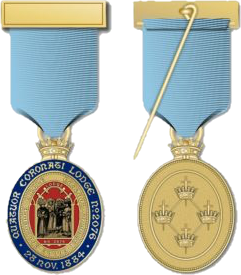
All members, individual and institutional, receive a copy of Ars Quatuor Coronatorum, the Transactions of Quatuor Coronati Lodge.
The volume is produced towards the end of each calendar year and mailed out in December to all members current as of November 30 in each year.
Members receive priority booking and discounted entry to conferences and symposia arranged by Quatuor Coronati, and enjoy discounts on non-QC regalia and books from our partner suppliers.
They have access to the Research Services offered by the Lodge, including assistance with research queries, a service provided by QC volunteers in conjunction with the staff of the Museum of Freemasonry at Great Queen Street in London.
Members who provide their email address receive regular reminders of our Lodge meetings and other events, and can download a soft copy of the Summons and copies or summaries of Delivery Papers.
Those who are members of a lodge in a constitution recognised by the United Grand Lodge of England are entitled and welcome to attend QC Lodge meetings and warmly encouraged to stay for drinks and dinner, which provides an opportunity to meet the speaker and members in a relaxed setting.
All members of QCCC are encouraged to wear the Quatuor Coronati Correspondence Circle breast jewel, tie and lapel pin.
WHAT DOES IT COST?
The cost of membership varies
in line with the cost of mailing out AQC.
The subscription price
has been held down
and is currently:
UK: £35.00
USA & Canada: £40.00
(or US$60 if paying by cheque)
Europe: £38.00
Latin America, Asia,
Aus, NZ and Rest of the World:
£49.00

Online: The easiest way to subscribe or renew is online: simply click on the ‘Join or Renew‘ button which will take you to our subscription pages. JOIN QCCC NOW
Telephone: You have the option to call our subscription telephone line for your order to be processed manually: + 44 (0)1778 392023. Our lines are open Monday to Friday 8.30am – 6.00pm (UK-time).
Post a Cheque: Individual and institutional subscribers can mail a £Sterling or USD 60 cheque (payable to QCCC Ltd) to QCCC Subscriptions, c/o Warners Group Publications Plc, The Maltings, West Street, Bourne, Lincolnshire PE10 9PH UK. Please include your full postal and email address.
No matter when you join, you will receive your copy of AQC the following December/January.
